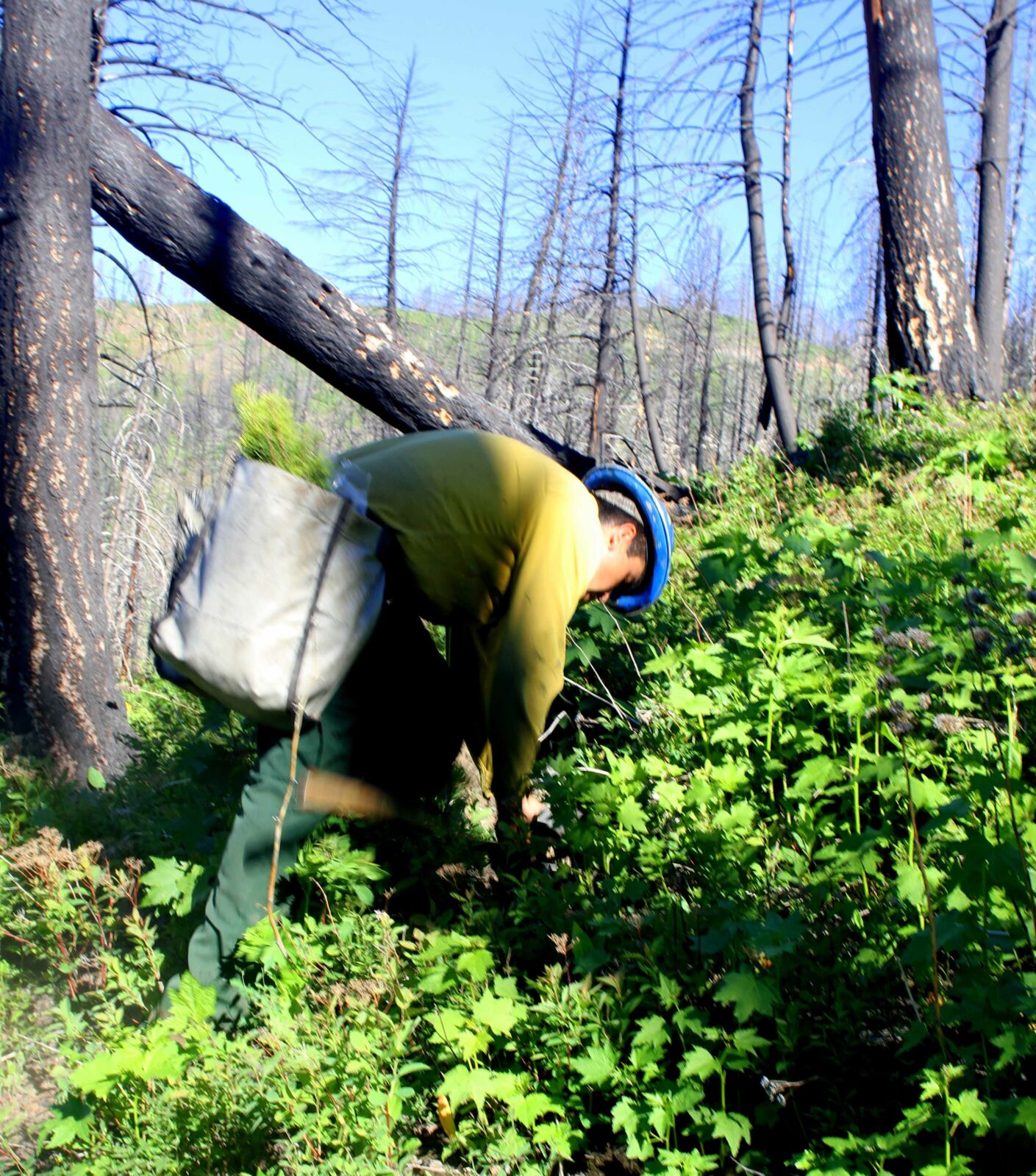As I looked up the hill to gauge how much further I had to climb to reach the level road cut, a bead of sweat dripped from my forehead and stung my eye. Catching my breath, I looked to the left as several professional tree-planters calmly walked up and down the hill, pausing every 20 feet to swing their tools and plant a tree. I turned back to size up the hill, sighed, and thought to myself “This shouldn’t be hard…I’m just walking up a hill. I’m in decent enough shape, right?” Sure, I’m in fine shape, but I’m not in good enough shape to last a single day as a professional tree planter.
I came to the Custer Gallatin National Forest in Southwest Montana to visit a tree-planting project that was sponsored through the National Forest Foundation’s (NFF) Trees for US program. This particular project—reforesting the area that was burned by the 2012 Millie Fire—was made possible through the NFF’s partnership with OneMain Financial. Although I’ve had the pleasure of working on reforestation projects for years, I had never seen what landscape-scale reforestation looks like at the ground level.

So what does it look like? The Millie Fire burned more than 10,000 acres in a high mountain watershed, leaving almost no remaining trees to serve as a seed source. Navigating the steep landscape (and slipping frequently) I watched as professional planters swung their tools, planting trees approximately every 15 seconds. Planters were working methodically—planting trees with great care in “microclimates” that were shaded by logs or dead trees to increase survival rates of the young Douglas fir seedlings.
“After a fire like the Millie Fire, it would just take forever for this forest to come back on its own.”
Amid the “clank” of tools hitting rocks, I occasionally heard the call of the Olive-sided flycatcher, a bird species that thrives in recently burned forests. Several hours later, exhausted from climbing up and down the hill, the tree planting crew headed down toward their vehicles. A crew of 15 people had planted more than 17,000 trees in a single day! While the landscape did not look much different from when I saw it in the morning, I know that decades from now, there will be a vibrant native forest here.

While the planting crew rounded up their gear, I briefly chatted with Keith Konen, a Forester on the Custer Gallatin National Forest. “After a fire like the Millie Fire, it would just take forever for this forest to come back on its own.” We surveyed the area together, noting that there was only one small clump of trees spared by the fire – way across the basin. “These partnerships are absolutely critical for allowing us to help address this reforestation need, and this is just a drop in the bucket.”
Click here to learn more about the NFF's Trees for US Program.
For more information about the Custer Gallatin National Forest visit fs.usda.gov/custergallatin.

